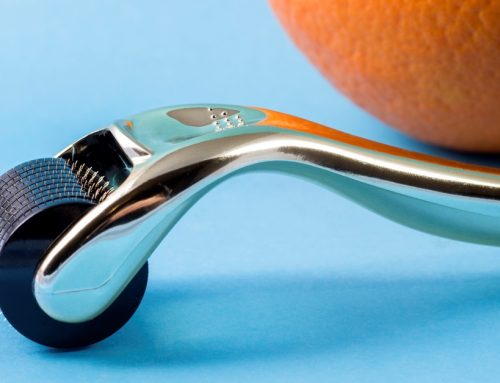Chances are you are just now hearing about microneedling, even though this procedure has been around since the 1980s. It’s only been recently, however, that microneedling has garnered any significant media attention, which is why it has remained under the beauty industry’s radar screen for all these years.
Microneedling is a technique that uses a needle-studded wand to drive tiny holes into the skin for the purpose of spurring collagen growth. It has long been known that the body’s response to damaged skin tissue is collagen production, which is why so many treatments – including Ultherapy, for instance – seek to disrupt the skin in some fashion.
In short, skin injury = collagen production = anti-aging.
What is Collagen?
Collagen is a protein that comprises 25 percent to 35 percent of the proteins in our body. It is mostly found in connective tissue, such as skin, muscle, and tendons. Collagen is what makes our skin firm, elastic, and healthy looking. Our bodies naturally produce collagen, but as we get older, collagen production declines at a rate of about one percent per year – the rate is even greater if you are a smoker (which is why so many women smokers have wrinkled skin).
In a nutshell, collagen benefits the skin by rejuvenating it. Microneedling, in turns, benefits and aids in the production of collagen, making your skin look and feel 10 to 20 years younger.
What Else Can Microneedling Do?
Microneedling can be used to treat and improve conditions such as fine lines and wrinkles, acne scarring, skin texture, loose skin, stretch marks, pore size, brown spots, pigment issues, and rosacia.
Nearly anyone can have microneedling performed as long as they do not have any active infections, lesions, or any known wound-healing problems. You should never have microneedling performed over active acne or tender acne cysts, as it will irritate the area. It can also make them more inflamed and potentially spread bacteria.
What Should I Expect During and After My Treatment?
Generally, a topical anesthetic cream is applied to your face to keep your comfortable during the procedure. More than likely, you will need multiple treatments, with the number of microneedling sessions dependent on your skin condition. For mild to moderate acne scarring, three or four treatments may be necessary. If treating deeper scars and stretch marks, five or more sessions may be required. Generally, microneedling treatment are spaced four to six weeks apart, with maintenance treatments scheduled at six and 12 months.
Skintherapy is a local leader in microneedling, having performed hundreds of procedures over the last 10 years. To schedule a microneedling consultation, call 404-358-2961 or visit http://skintherapybuckhead.com.
Resources






